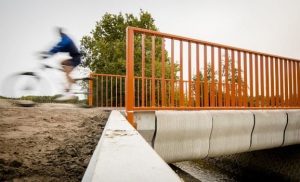US Seek $100 Billion to Deliver Fibre to Home
February 1, 2016
EDUCAUSE, who attempt to promote higher education in the US, have published a report estimating that delivery of 100Mbps broadband connection to homes and businesses in the US using a fibre connection could cost up to $100 billion.
Although perceived as huge sum of money, when compared to the £15 billion (approximately $30 billion at current exchange rates) anticipated to roll out fibre across the UK, it’s somewhat a bargain.
Deploying fibre to the home (FTTH) to over 300 million people is complex, principally with the magnitude of the US. Moreover it is therefore surprising that the cost per person in the UK ($500) is that much higher than the cost per person in the US ($333).
It is satisfying to see that the report is aware of the future, taking into consideration the applications available today, while also aware that in 10 years things could be very different and much more bandwidth intensive. Currently, television is broaching on high definition (HDTV) with some content broadcast in this format. The outlook holds even higher resolution television such as Super Hi-Vision, being developed in Japan, which gives a pixel resolution of 7680 x 4320 (compared with the common 1280×720 for 720p/i), and comes in at 24Gbps uncompressed.
Constructed networks need to plan for the future when cutting edge technology will be widely available to the public rather than at the existing, experimental stage.
100Mbps over a FTTH technology is just the start. The utilized fibre can cope with much faster speeds, and in the future, by upgrading the hardware at each end, could facilitate for necessary upgrades.
This is where the existing makeshift technologies such as ADSL2+ being deployed here in the UK as part of BT’s 21CN start to encounter problems. The implemented copper cable phone lines are near to the confines of the bandwidth you can essentially use them for at the distances being used. It is more cost effective to deploy fibre sooner rather than investing in temporary technology. The difficulty is persuading those people who need to put forward the investment.
For this, the report recommends the creation of a federal fund to put forward investment that would be matched by funds from individual states, the public and/or the private sector to cover the costs.
Spreading the weight of the cost is a shrewd plan, but the existing US market, without an obligation for unbundling could see the formation of a monopoly on the network if regulation isn’t forced and private sector backing is exclusively engaged. Whether this government aided approach would work in the UK is not known. Previous public-private partnerships have been faced with a lot of resistance.
Regrettably for the US, the Bush administration does not believe it should be intervening in advancing the market towards any particular technology, and this will consequently mean that they won’t be putting up the cash to facilitate new networks deploypent. Their view is in fact quite the contrary. In their opinion, removing regulation that requires unbundling is more likely to encourage local operators to upgrade their networks. This leaves little optimism for a wide-spread FTTH roll-out within the US any time soon.
This is perhaps one phase where the UK has been fortunate. Stephen Timms has done an excellent job at promoting the need for high-speed broadband, and encouraging industry to work toward a solution, and we only anticipate his successor will endeavor to continue his fine work.











